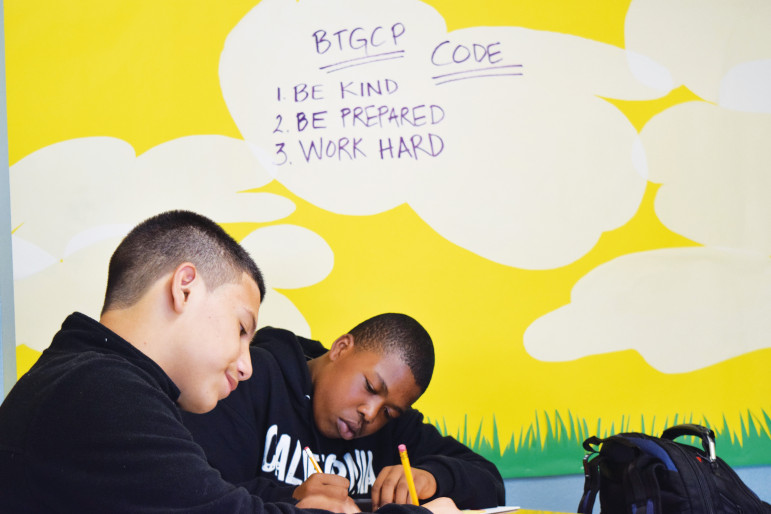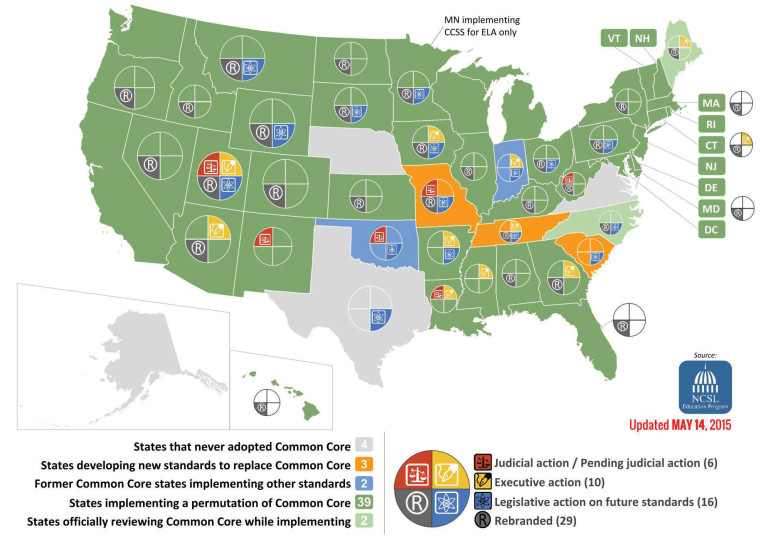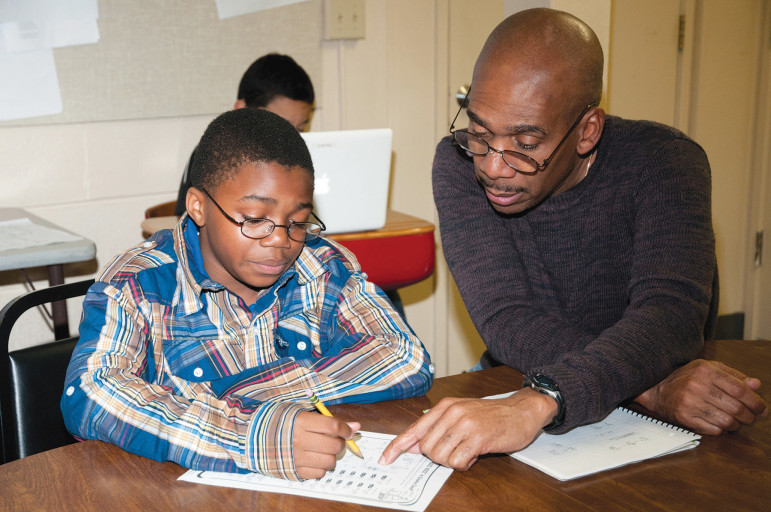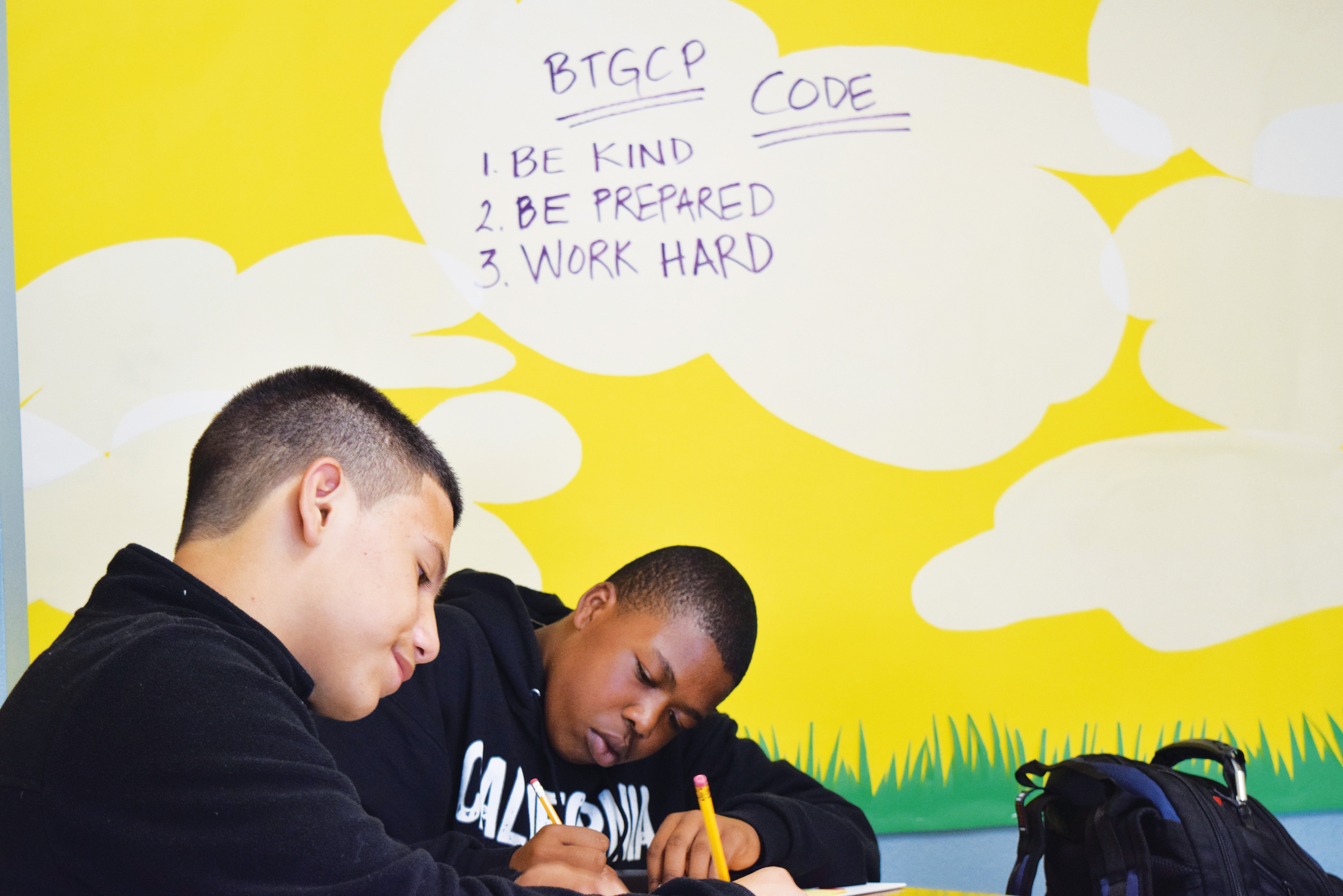
Photos courtesy of Bridge the Gap College Prep
Bridge the Gap College Prep, a 19-year-old after-school program in Marin City, Calif., offers an intensive college prep program for kids in fourth through 12th grades. Instruction for fourth- through eighth-graders is aligned with Common Core Standards.
Imagine an American education system that works well for all students — a system that pulls U.S. students forward from a laggard position on international student tests and erases the gap between low-income kids and more affluent students. Imagine a system that prepares kids well for the types of jobs seen in the 21st century.
The Common Core State Standards were envisioned by their developers to do just that — to prepare an upcoming generation for a changing future.
“The Common Core addresses three leading concerns in our nation’s fight for education reform: an inadequate number of students prepared for college and careers, a lack of equity in academic expectations across and within states, and the inability to compare results across states,” writes Taliah Givens, program director for the Council of Chief State School Officers, for the Expanded Learning & Afterschool Project.
[Related: Kids Count Report: Economic Recovery Bypassing Kids]
Opponents of Common Core standards say national standards interfere with local control of education. Others criticize their implementation. They say the standards have not been tested enough. They also say the tests to measure student understanding have been poorly developed.
An Education Next poll in 2014 showed that teacher support for the standards had dropped from 76 percent to 46 percent.

State actions according to the “Common Core Status Map” by the NCSL Education Program. Click above for the full online version.
Nevertheless, standards are in place in 43 states and the District of Columbia. Three states repealed them in 2014, and Tennessee repealed them this year, but repeal efforts in 18 states have failed so far, according to the National Conference of State Legislatures.
Some out-of-school time programs have attuned their activities to these new standards.
“Students need extra support outside the school hours,” Nikki Yamashiro, director of research at the Afterschool Alliance, said in a webinar about the standards last year.
According to the U.S. Department of Education, the federally funded 21st Century Community Learning Centers may be encouraged by state program administrators to align to the standards, but there is no federal mandate to do so.
How programs align
The 21st Century Community Learning Center in Winooski, Vt., a small city just outside Burlington, serves 484 kids from kindergarten through 12th grade.
The small Winooski school district has only one high school, middle school and elementary school, all in a single complex, which also houses the after-school program.
A visitor might find the third- through fifth-graders taking part in wacky science experiments after school.
“They learned about electricity by connecting a wire to a pickle,” said Barbara Russ, a former elementary school principal who directs the after-school program. As they turned on the electricity and watched the pickle burn, the kids were also exploring cause and effect, a Common Core standard.

In keeping with the Common Core emphasis on critical thinking, students in Bridge the Gap College Prep analyze math problems in several ways. They may be asked to draw a picture to illustrate the problem or to show it on a number line. They are asked to write an explanation of the problem, an approach that children initially found frustrating, instructor Liz Bamberg said.
Their after-school teacher had previously written a lesson plan that listed how the project connected with the standards.
Another experiment involved dropping candy mints into a carbonated beverage. Students made predictions about the outcome before they started. The activity was tied to standards that require students to plan and carry out investigations as well as answer questions and test solutions.
“Each experiment went back to those Common Core standards the teacher had identified,” Russ said.
Many of the after-school staff teach at the school and are using Common Core standards in their classrooms.
“It makes sense to continue that focus [after school],” Russ said.
The staff submits lesson plans. It’s part of making sure the program is “high-quality and intentional,” Russ said.
Students in the after-school program take a pre-test and a post-test to measure how much they’ve progressed during the year.
In addition to doing hands-on experiments, the after-school program can take more time on projects than is available in school, Russ said.
Middle school students can take part in a science club. “They pick out projects and areas that they focus on,” she said. “We really take the lead from them.”
“If they’re interested and have a voice, they’re more likely to be invested,” she said.
Nurturing emotional knowledge as an academic support
Bridge the Gap College Prep, a 19-year-old after-school program serving more than 160 low-income students in Marin City, Calif., is located in one of the most affluent counties in the nation. A wide income gap exists between most of the county and Marin City.
[module type=”aside” align=”right”]Habits of mind and the Common Core
For literature
- Students demonstrate independence.
- They build strong content knowledge.
- They respond to the varying demands of audience, task, purpose and discipline.
- They comprehend as well as critique.
- They value evidence.
- They use technology and digital media strategically and capably.
- They come to understand other perspectives and cultures.
For mathematical practice
- Make sense of problems and persevere in solving them.
- Reason abstractly and quantitatively.
- Construct viable arguments and critique the reasoning of others.
- Model with mathematics.
- Use appropriate tools strategically.
- Attend to precision.
- Look for and make use of structure.
- Look for and express regularity in repeated reasoning.
The program uses Common Core standards in working with its fourth- through eighth-grade students, Bamberg said. They work in several areas: math, writing, literacy and social-emotional skills.
For math, the starting point is the student’s homework, Bamberg explained. In keeping with the Common Core emphasis, students are encouraged to look at problems in three ways, for example: drawing a picture of the problem, explaining their thinking and using a number line.
“They were shocked to discover they had to write down their thoughts [about math problems],” Bamberg said.
The Common Core includes a set of attitudes called Habits of Mind. Bridge the Gap College Prep uses these as a guide for social and emotional work. The habits include perseverance, curiosity and an understanding of others’ perspectives.
The stresses of poverty can create problems that affect children’s ability to learn, Bamberg said.
“Every student comes to the classroom with something they have to work on,” she said.
Children take a pre-test that surveys their attitudes and behavior around schoolwork. Then they discuss what they’ve learned about themselves. Does one student feel unable to sit down and concentrate? Does another get obsessed with having to sharpen and resharpen her pencil — to the neglect of schoolwork?
They learn to think about their thinking, and are better able to see themselves and their actions, Bamberg said.
“Students can address these head-on,” she said. They discuss the things that get in the way of their schoolwork, and they get praise and recognition when caught doing things right.
Bridge the Gap College Prep teaches writing by having the students create personal narratives.They focus on creating a safe space in which they can express themselves freely.
This approach helps them find their voice, Bamberg said.
Students who at first threw away their work because it felt too personal are now willing to stand up and read it, she said.
Advice for working with Common Core
Many state after-school networks have provided training on aligning with the Common Core.
“We generally give folks the advice to look at the introductory sections” of the Common Core State Standards, said Nora Niedzielski-Eichner, executive director of the New York State Afterschool Network. She was referring to the habits of mind that are linked to the standards and described by the Council of Chief State School Officers in the publication “Connecting High Quality Expanded Learning Opportunities and the Common Core Standards.” (See resource box.)
“They read like they were written for youth-development people,” she said.
The role of an after-school programs is not to teach directly to the standards in the way that schools do.
“We’re not the teachers,” she said. The role of after-school — in relation to Common Core — is to help kids learn what the school is trying to teach, but through different methods, fostering the habits of mind and critical thinking that help students succeed.
Russ, from Winooski’s 21st Century Community Learning Center, also has advice on aligning with the Common Core. “I’d reach out to programs that are doing it,” she said, to learn how you can adapt that for your program.
For more information
- The Forum for Youth Investment looks at how out-of-school programs can align their work with the standards. “The Common Core Standards: What Do They Mean for Out-of-School Time?”
- An issue brief “Afterschool and the Common Core Standards” from the Afterschool Alliance explains the standards and how after-school programs can support them.
- Common Core State Standards Initiative publishes the standards and learn the history of their development.
- Council of Chief State School Officers provides updates on the Common Core Standards and the report “Connecting High Quality Expanded Learning Opportunities and the Common Core Standards.”
More stories related to after-school:
New Out-of-School Time (OST) Youth Today Webinar Series
Setting Standards for Out-of-School Time
Rewriting Education Law: Senate Replaces ‘No Child Left Behind’
After-School Programs Needed, But Scarce in Poorly Funded Rural Areas
After-school Funding Reinstated in Senate Education Bill































